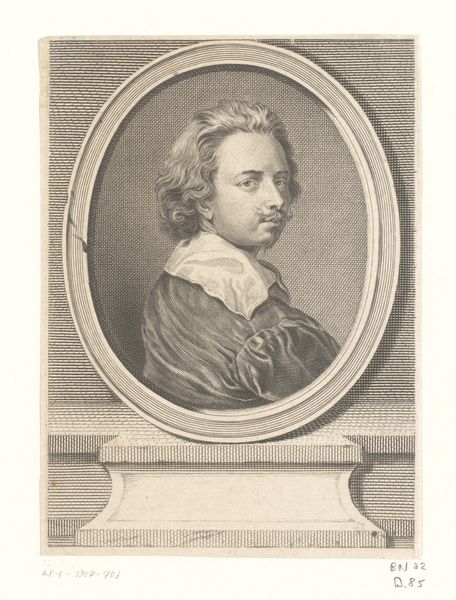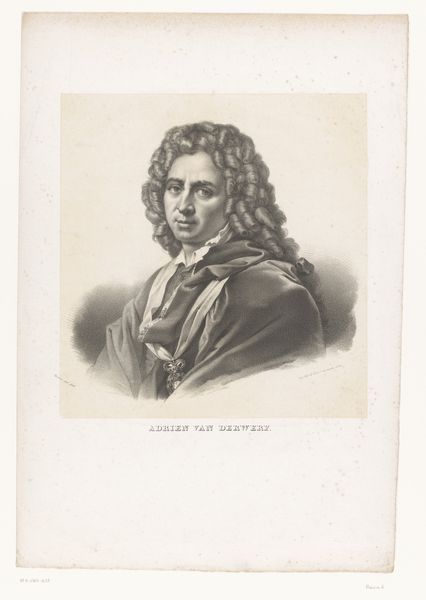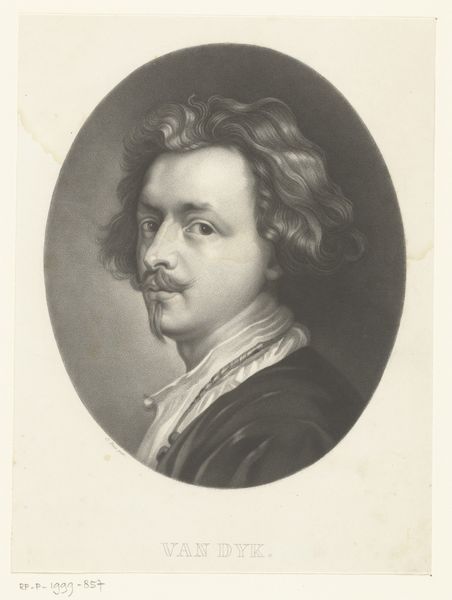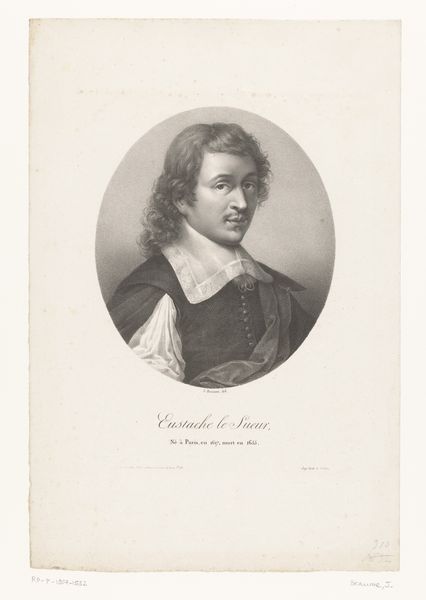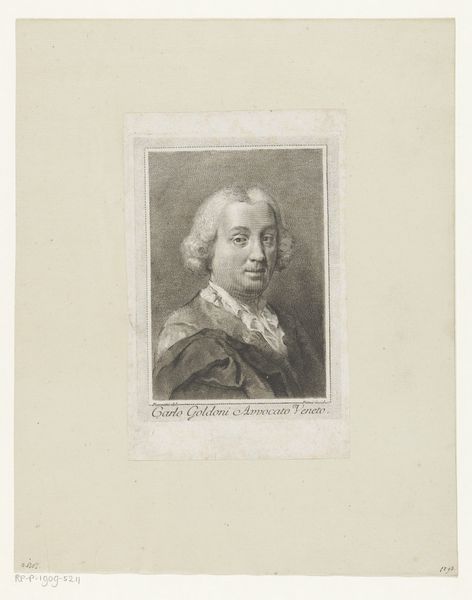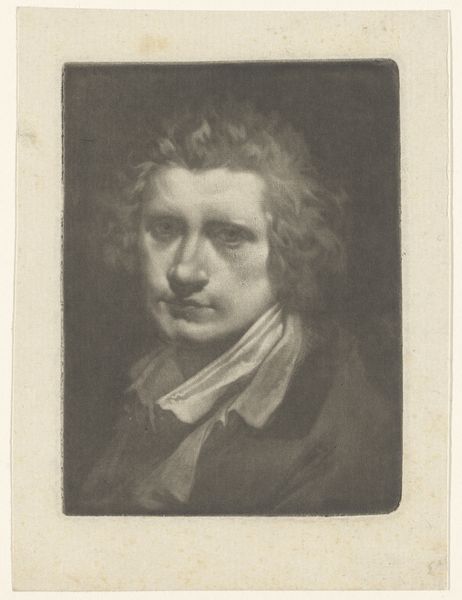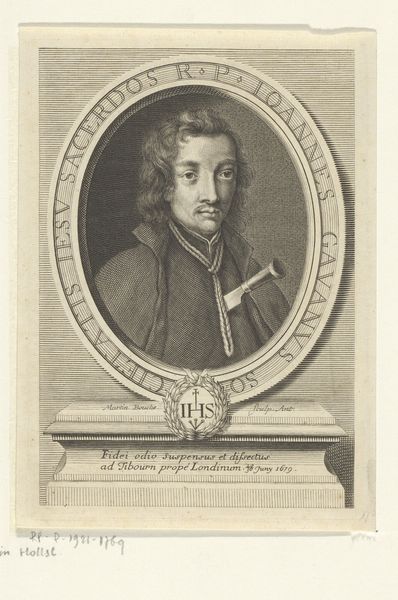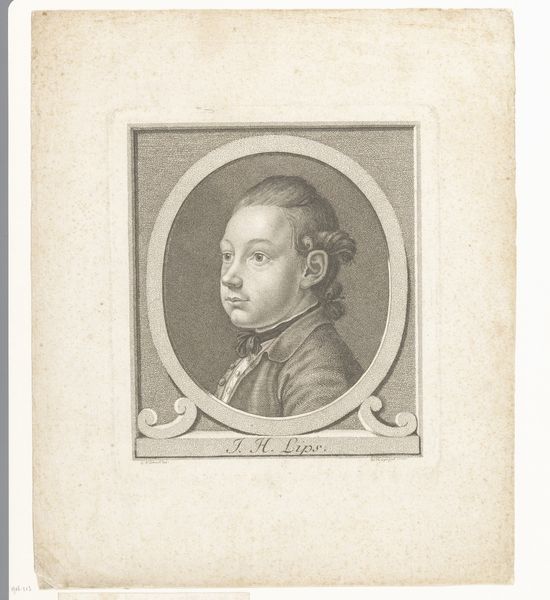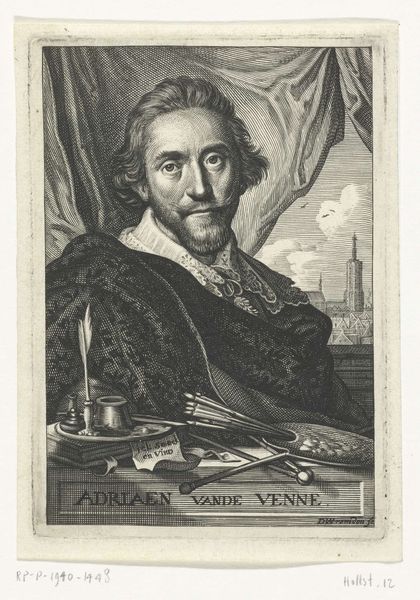
print, etching, engraving
#
portrait
# print
#
etching
#
romanticism
#
history-painting
#
engraving
Dimensions: height 432 mm, width 301 mm
Copyright: Rijks Museum: Open Domain
Gustav-Adolphe Diez made this portrait of Anthony van Dyck in the early 19th century using lithography, a printing technique that democratized image-making. Unlike laborious engraving, lithography allows for a more direct translation of the artist's hand, as the image is drawn onto a stone or metal plate with a greasy crayon, then chemically treated to accept ink only where the crayon marked. The resulting print carries a unique texture, a blend of soft gradations and crisp lines, giving the portrait a sense of depth and immediacy. Lithography's rise was fueled by industrialization, making art more accessible. This print, "Dédié aux Artistes" – dedicated to artists – speaks to the changing role of art in society. Prints like these were instrumental in circulating images, influencing artistic styles, and fostering a broader appreciation for art. They remind us that artistic innovation is often intertwined with technological advancements and evolving social values.
Comments
No comments
Be the first to comment and join the conversation on the ultimate creative platform.

